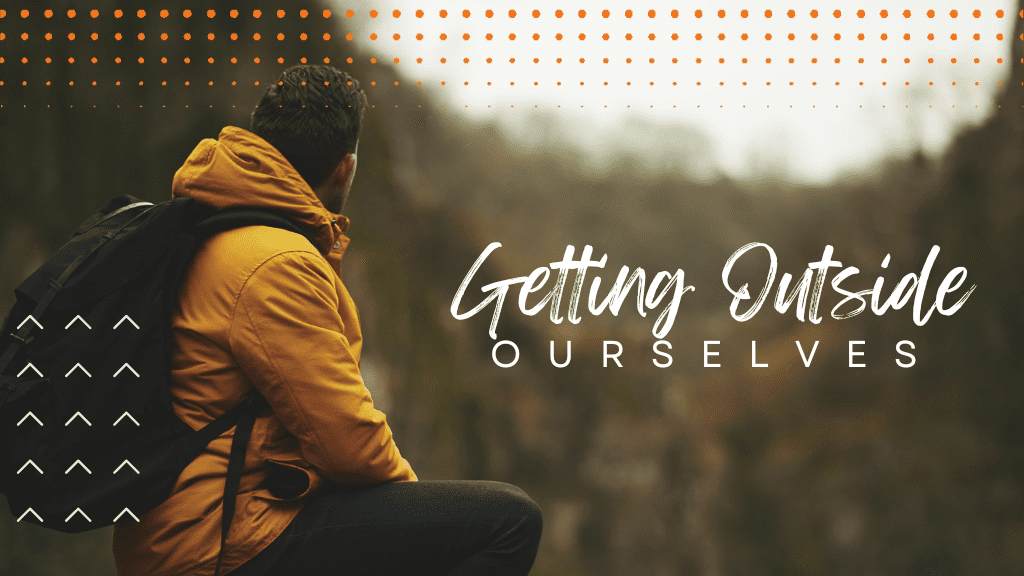I’ve transitioned back to American life after being an expat for extended periods twice now from two different countries. Both times, the change that most impacted me on a daily basis was the difference in time spent outdoors. I found myself longing for the 15 minute walk to the grocery store or the classic Sunday stroll through town or the massive city parks where I had spent evenings and weekends walking and picnicking. In fact, I usually averaged 3-5 miles of walking in a day, without trying to work it in as exercise. Getting outside was easy. It was part of everyone’s daily life.
Most Europeans I know love being outdoors. They make it a priority in their free time. But life itself demands it, no matter what. You simply can’t drive everywhere, which forces you to walk. No matter the weather.
In Texas, we are often ready with an excuse for why it’s not ideal. It’s too hot or too cold or too rainy. There’s nothing forcing us outdoors, and it’s not socially acceptable to be hot and sweaty anywhere outside of a workout.
Let’s take the enormous amount of time we spend on our screens out of the equation. Unless you live in a place like New York City, a day running errands means that you are in the car most of the day. We drive to a place, go inside to complete our task, and return to the car.
But scientists and researchers have long been mounting evidence that being outside is not only good for us. It’s necessary.
It improves our mood and benefits our mental health.
There are 3 main theories why nature is so effective at improving our well-being. The International Journal of Wellbeing has a great article explaining why. But to summarize in layman’s terms, there are 3 main theories:
- Until the last generation or 2 in the historical timeline, humans spent almost all of their time outdoors. Living the urban life is a pretty recent development. So it stands to reason, that we are biologically attuned to nature.
- Natural environments capture our attention in a way that allows us to let go and live in the moment.
- Nature calms us down and give our minds and bodies a chance to recover from stress.
Regardless of the reason, a myriad of studies have been done on various benefits from spending time in nature. They’ve concluded that even minutes of exposure to natural environments can:
- Improve self-control behaviors in kids
- Improve working memory and attention span
- Significantly improve accuracy when completing tasks
- Increase happiness and decrease mental distress
- Makes us more social and cooperative toward others.
One Danish study even found that children who lived in neighborhoods with more green space are 55% less likely to experience mental illness.
So it’s quite clear that spending time in nature is good for us, but how much and how?
In a study done in the UK of nearly 20,000 adults, they found that 2 hours per week gave participants significantly better health and well-being. It didn’t even have to be all at once.
But how?
That depends very much on your family and your lifestyle!
If you have tweens or younger kids in your house, I highly recommend looking into @1000hoursoutside and @wildandfree.co on Instagram or looking for the 1000 Hours Outside book by Ginny Yurich. You’ll be inspired with all the fun ideas and beautiful imagery.
Here are a few more ideas you might like, but I’m sure you’ll find more!
- Pack a picnic lunch and head to your favorite green space. You can do this even during the week!
- Visit the closest botanical gardens or arboretum. My family LOVES the Ft. Worth Botanical Gardens. It’s well worth buying the family pass and losing track of time there on the weekends (or some well-deserved PTO).
- Google hiking trails near you and make it a family adventure or a staycation activity.
- Go strawberry picking. Or any kind of fruit harvest is delightful! Tell me in the comments in you want local DFW options.
- Take phone calls outside.
- Instead of heading to the gym after work, head to the closest walking trail before or after work.
- If you can, create an outdoor space at home where you can read, have dinner, invite guests. Even teenagers will get excited about this one once they try it!
- This will sound crazy to Texans, but… even just opening the windows every once in a while can help!
Tell us in the comments what you like to do to get outdoors and where you like to go!
To read more
Ecotherapy: Theory, Research and Practice
Jordan, M., & Hinds, J. (Eds.), Red Globe Press, 2016
Environmental Neuroscience
Berman, M.G., et al., American Psychologist, 2019
Nature and Mental Health: An Ecosystem Service Perspective
Bratman, G.N., et al., Science Advances, 2019
Nurtured by Nature
Weir, K., American Psychological Association, 2020

Kelly Fann
Digital Media Manager
Kelly Fann | Digital Media Manager
Kelly has a desire to empower young people to grow into the best version of themselves. Using her background in branding and word-smithing, she is a master at highlighting resources that help teens learn skills that will enable them to grow and to adapt, to enjoy life and to be better citizens. Kelly has a MA in Linguistics from North Texas University.
